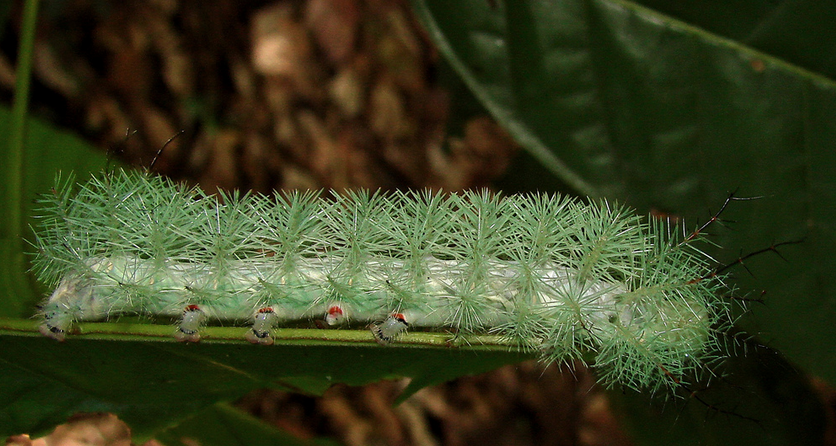Habitat and Interations
Where would I find a L. obliqua caterpillar?
The L. obliqua likes the warm tropical weather with very warm
temperatures and high humidity. They need the warmth for their
growth development from larva to an adult moth. The only region
that the L. obliqua are found is in the southern regions in
Brazil (Lorini et al. 2007). A large
 majority of reports of
contact with the caterpillar have been reported to the wildlife
department of Rio de Janeiro, Rio Grande do Sul and Santa
Caterina states, but they are gradually moving south towards
northern Venezuela (Schmitberger et al. 2013 and Lorini et al.
2007).
majority of reports of
contact with the caterpillar have been reported to the wildlife
department of Rio de Janeiro, Rio Grande do Sul and Santa
Caterina states, but they are gradually moving south towards
northern Venezuela (Schmitberger et al. 2013 and Lorini et al.
2007).
Why are they becoming popular in the cities of Brazil?
Within the past ten years, there has been an increase of
incidences with the caterpillar because of environmental issues. There has
been deforestation in the original habitats of the caterpillar, so they
moved towards the cities. The caterpillar prefers to live on the indigenous
trees of the regions near the Rio Grande do Sul and Santa Caterina states in
Brazil. Since the habitat the caterpillar prefer was being torn down, they
were forced to migrate slowly towards the fruit trees near the highly
populated urban area which is becoming a problem. For now they are in great
numbers in the rural areas just outside some of the cities but that is
slowly changing (Schmitberger et al. 2013).
The surprising mutualism?
Since the
caterpillar is so poisonous and scary for most animals to interfere with,
the caterpillar to an extent protects the trees that it lives on. The trees
are protected from the birds or other insects that may harm the tree. L.
obliqua prefer at times to live in groups and at some moments there could be
more than 20 caterpillars occupying one spot on a tree, which would be very
intimidating for any animal that may want to get on the tree and start to
drill a hole in it. In this case, the caterpillars get the food and shelter
they need, and the tree gets protection from any possible danger that they
have very little ways to defend against (Veiga et al. 2001).
How do they act with others?
Due to the venomous spines that the L. obliqua have, they do
not interact well with other animals. If an animal were to be stabbed by the
spines, they could have many fatal medical issues. If a predator were to try
and eat the caterpillar, the odds of the predator living would be very slim
because the venom is so poisonous. Due to evolutionary learning, the
caterpillar has very few if any predators because of their spines being so
toxic (Carrijo-Carvalho and Chudzinski-Tavassi 2007). When it comes to human
interaction, it has increased dramatically due to the migration of the
caterpillars. The humans fall victims to the unknown dangers and can be
seriously injured. The cases of hospitalizations from L. obliqua stings has
gone up while the awareness and education of the dangers have stayed the
same (Schmitberger et al. 2013). To learn more about the legendary venom,
you can go on to the page Venom.
But before you get ahead of yourself, look at the adaptaions!